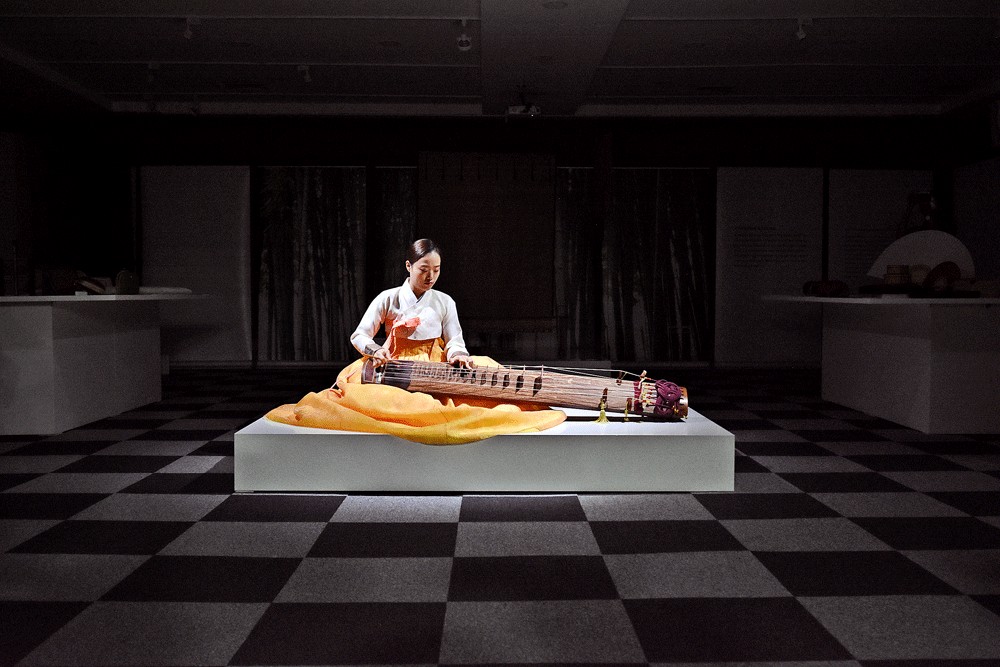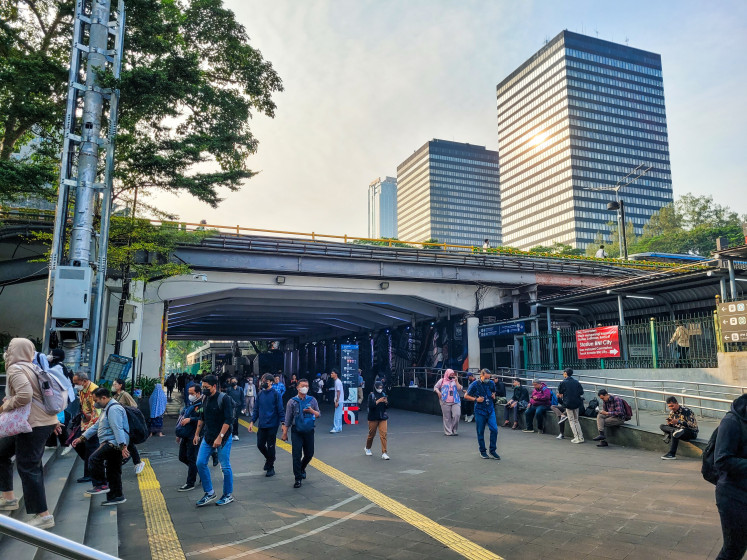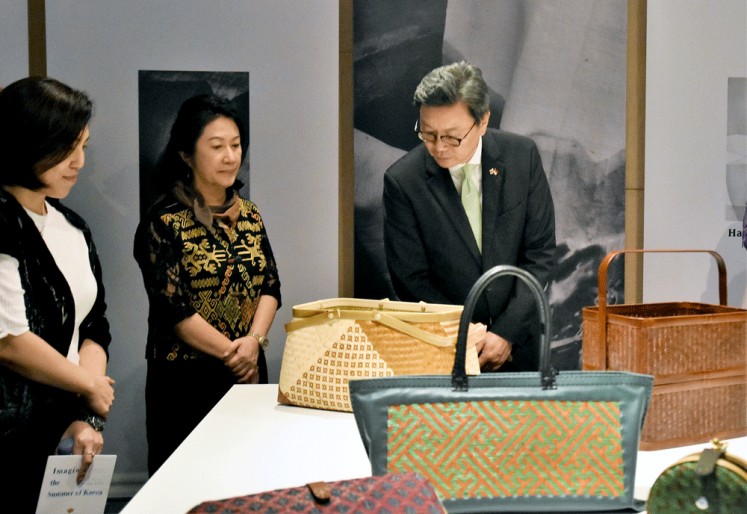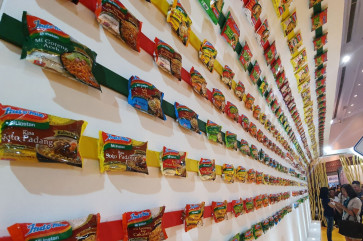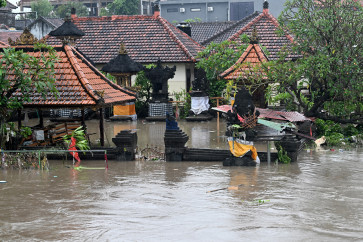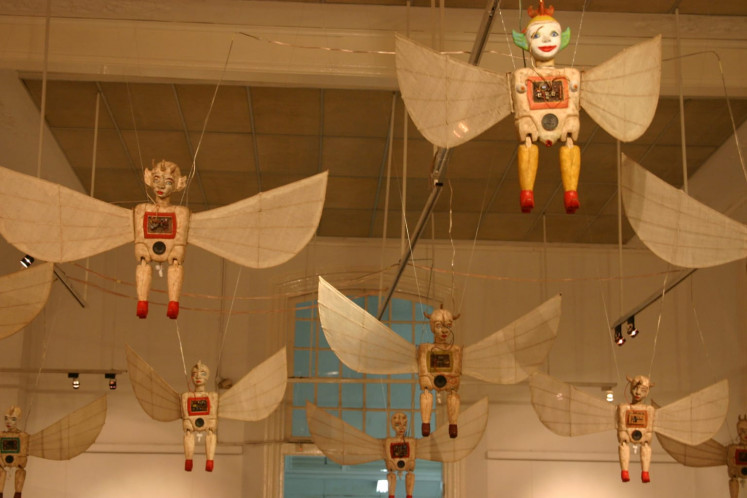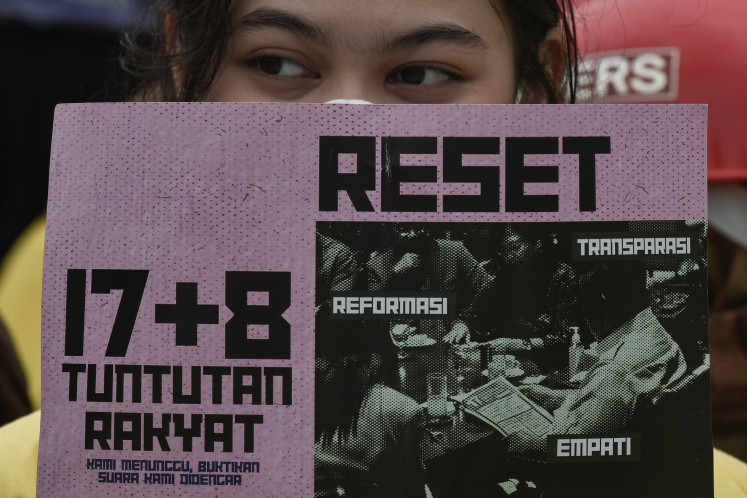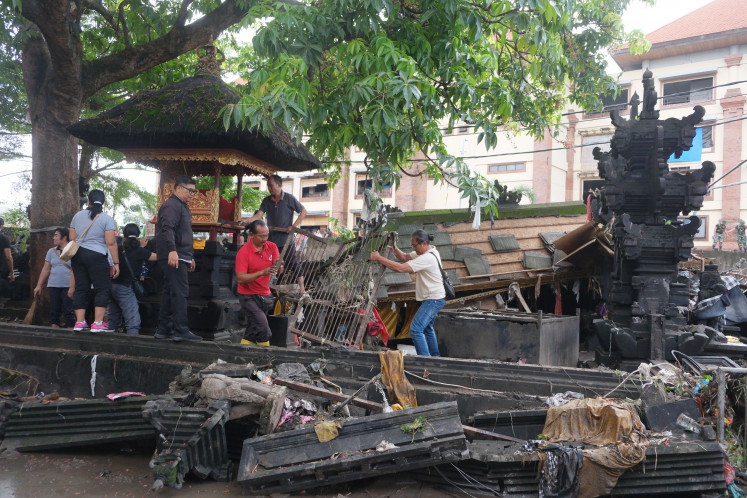Popular Reads
Top Results
Can't find what you're looking for?
View all search resultsPopular Reads
Top Results
Can't find what you're looking for?
View all search resultsImagining the imperial Korean summer
South Korea’s National Intangible Heritage Center has brought its traditional exhibition to Jakarta, inviting Indonesians to take a closer look at the traditional wares and emotions that defined summer in imperial Korea.
Change text size
Gift Premium Articles
to Anyone
T
he Imagine the Summer of Korea exhibition gave visitors a look inside the summer lives of traditional Koreans in the imperial era, when summers were less bearable than today and people relied on the creative use of their tradition to get themselves through the season.
Thus the Koreans found refuge in the small happiness they felt in their surroundings as well as the feel of their linen pillows and hemp covers to stave off the heat.
“[Koreans] climbed mountains with the best views, dipped [their] feet in cool streams reflecting the moon and ate hearty, stamina-boosting food to overcome the heat,” a description on the exhibition wall read.
The myriad of artifacts displayed in the recent exhibition at the Korea Cultural Center Indonesia in South Jakarta told stories about how both noble and common Koreans in the imperial period went through their summer through the small pleasantries they found in their everyday life.
For many, as is the same today, summer is best handled through food and comfortable furniture.
There was also a showcase on significant traditional wares that might not be directly relevant to the summer season but are prominent objects in Korean tradition.
Showcases on the traditional Korean art of Chaesangjang, which involves weaving cases from bamboo, were shown prominently as one of the examples of Korean artisanship in the Joseon Dynasty era. The woven bamboo boxes were usually created for women in both the noble and the common classes for marriage, usually holding needles, thread, clothing and other accessories.
The braiding of the bamboo undergoes the individual color dyeing process of each strand in order to create patterns or show Korean symbols of good luck.
Admiration: South Korean ambassador to Indonesia Kim Chang-boem (right) observes a woven bamboo bag shown at the Imagine the Summer of Korea exhibition at the Korean Cultural Center Indonesia. (The Jakarta Post/David Caessarre)Another bamboo craft that was important for Koreans in the summertime were Bal (bamboo-made blinds), the art of which is called Yeomjang. Traditional Korean houses usually use Bal as a method of preventing rays from the sun from coming into the house, which provides some cool comfort for those inside.
Bal is created mainly with bamboo, reeds and peeled hemp stalk that are dried in the sun for two months before being used as blinds.
Aside from bamboo artifacts, the exhibition focused on the table and eating traditions of feudal Korea. Brass bowls and other wares were the most numerous artifacts on display, as well as a showcase of Hangwa food (traditional Korean snacks) that are traditionally consumed by the noble class, many of which are no longer commonly consumed by modern Koreans.
The food range from flour-made sweets usually consumed with tea called Dasik, boiled sweet dried fruits called Jeongwa and a glutinous rice flour sweet called Jeolpyeon.
Jo Hyun-jung, director of the National Intangible Heritage Center in South Korea, said in some cases, some of the artifacts, or some forms of it, are still used in everyday, modern Korean life as they are passed down through the generations.
Showcasing them at the cultural center is a form of introduction to the traditional side of Korea to foreign countries such as Indonesia, whose people have a very strong interest in both traditional and modern Korean culture.
“These artifacts are considered very historical by the Korean people as these are sometimes still being used in modern life. This is because the method of creating these artifacts are passed down from generation to generation,” Jo said.
The exhibition also included several interactive programs related to the artistic side of Korean traditional culture.
Prominent Royal Culinary Art chef Jeong Gil-ja was a guest at this event, showcasing her masterful skills in creating traditional Korean sweets in cooking classes, while bamboo blinds-weaving demonstrations were given by Jo Dae-ngong.

